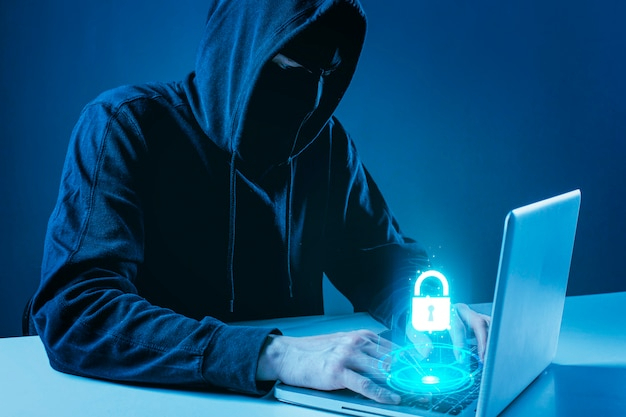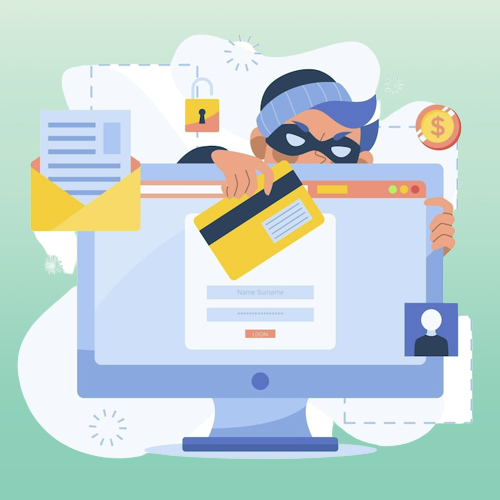Preserving Trust And Security: The Vital Role Of Phishing Protection In Today's World
In an age where the virtual realm intertwines with our everyday lives, trust and security stand as the pillars upon which our digital existence rests. As we navigate a landscape characterized by the constant exchange of information, financial transactions, and personal interactions online, the need to safeguard ourselves from malicious actors has grown exponentially.
In this ever-evolving digital ecosystem, one threat looms large, capable of undermining trust and compromising security at every turn: phishing attacks. This article embarks on a journey to unravel the critical significance of phishing protection in our contemporary world, where trust and security are not just ideals but essential imperatives. To become more knowledgeable about phishing protection, you can peruse our webpage.

The Evolution of Phishing
The concept of phishing is not new; it has undergone significant transformations since its emergence in the early 1990s. Initially, phishing attacks were basic and depended on sending out mass emails with poorly constructed messages. Nevertheless, cybercriminals have become increasingly sly, employing sophisticated tactics to deceive their targets.
Phishing attacks in the modern era frequently employ meticulously designed emails that imitate trusted sources like banks, social media platforms, or government agencies. These emails often feature apparently authentic links and solicitations for personal information, posing a challenge even for individuals well-versed in technology to differentiate them from genuine communications.
The High Stakes of Phishing
The potential outcomes of becoming a victim of a phishing attack can be extremely serious. People put themselves at risk of having their identity stolen, suffering financial losses, and having their sensitive personal information exposed. On the other hand, for businesses, the stakes are even greater. Phishing attacks can result in data breaches, financial losses, and damage to their reputation. Rebuilding trust after a successful phishing attack can take many years, and in certain situations, it may not be possible to repair the damage done.
The Role of Phishing Protection
In order to maintain trust and security in the modern digital world, it is essential to prioritize phishing protection. This involves utilizing a combination of technological advancements, educating users, and implementing best practices that effectively minimize the potential risks associated with phishing attacks.
1. Advanced Email Filtering
Email phishing remains a prevalent threat, with attackers exploiting this communication channel extensively. Leveraging machine learning and pattern recognition capabilities, cutting-edge email filtering solutions play a pivotal role in identifying and containing dubious emails before they infiltrate the recipient's inbox. This indispensable technology acts as the first line of defense in combating phishing attacks.

2. User Training and Awareness
It is of equal importance to educate users about the risks associated with phishing. Numerous attacks have been successful due to individuals unknowingly clicking on harmful links or sharing confidential information. By implementing training programs, employees and individuals can learn to identify phishing attempts, thereby promoting vigilance and the reporting of suspicious emails.
3. Multi-Factor Authentication (MFA)
MFA enhances security measures by mandating users to provide multiple forms of verification prior to accessing their accounts. Even in the event of a password being compromised due to a phishing attack, MFA can effectively obstruct unauthorized access, effectively countering cybercriminals' endeavors.
4. Continuous Monitoring and Incident Response
Safeguarding against phishing necessitates ongoing commitment. Through vigilant monitoring of network traffic and user behavior, any suspicious activities can be swiftly detected, leading to prompt response and mitigation efforts. The implementation of incident response plans plays a vital role in reducing the harm caused by a successful attack.
5. Vendor and Third-Party Risk Assessment
It is crucial for organizations to expand their security focus beyond just internal measures and consider the security practices of their vendors and third-party partners as well. Overlooking this aspect can potentially expose organizations to phishing threats, as weak links in the supply chain are often targeted. Conducting comprehensive risk assessments is essential in order to detect and address any vulnerabilities that may exist.
Visit DuoCircle Here
DuoCircle
5965 Village Way Suite 105-234,San Diego, CA 92130
Phone: (+1) 855-700-1386
To close out, phishing attacks have become increasingly sophisticated and widespread in recent years, posing a significant threat to individuals, businesses, and organizations of all sizes. Fortunately, with the right phishing protection measures in place, it is possible to minimize the risk of falling victim to these attacks and preserve trust and security in today's world. By staying informed about the latest threats and investing in robust security solutions, individuals and organizations can stay one step ahead of cybercriminals and keep their sensitive data safe from harm.